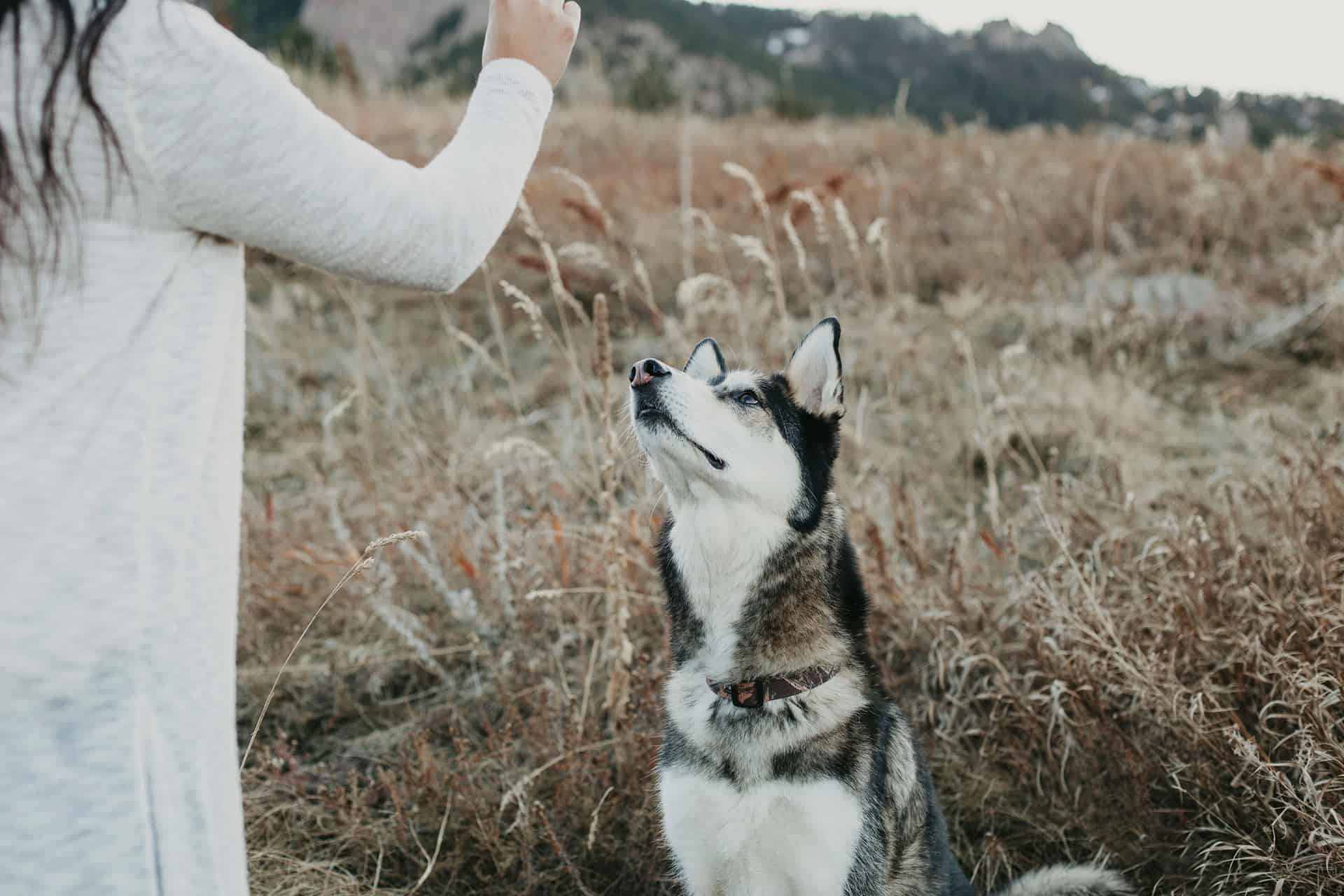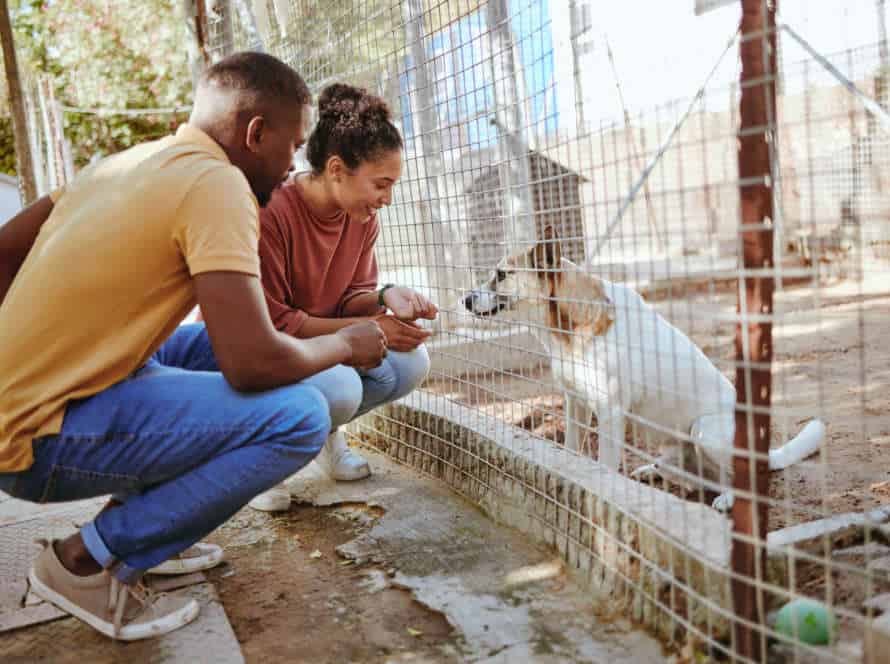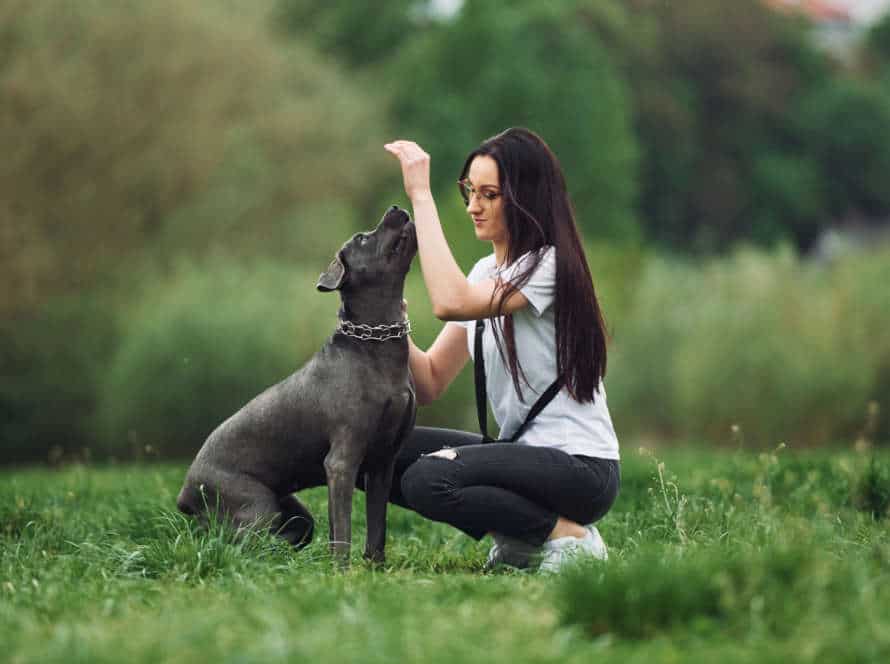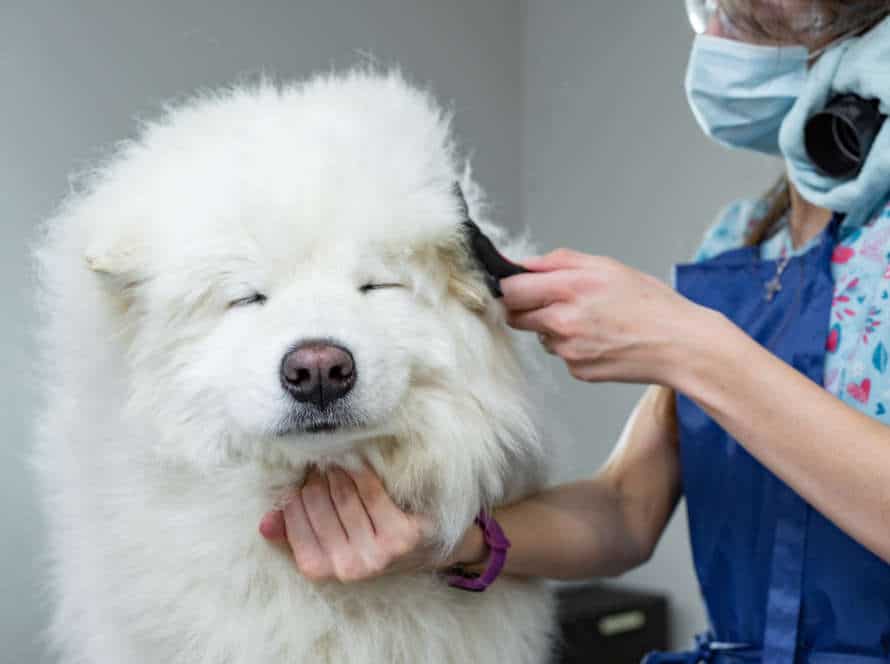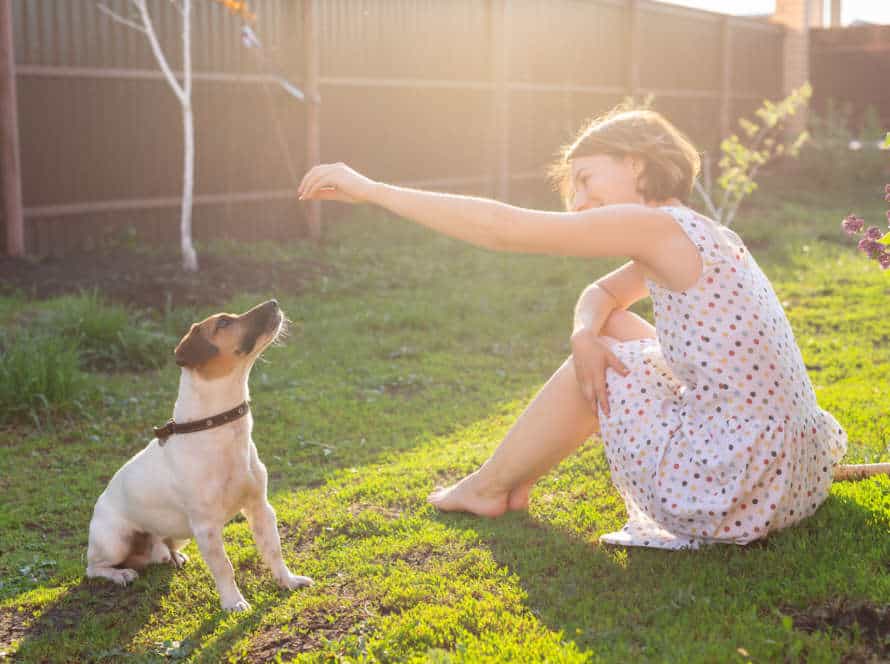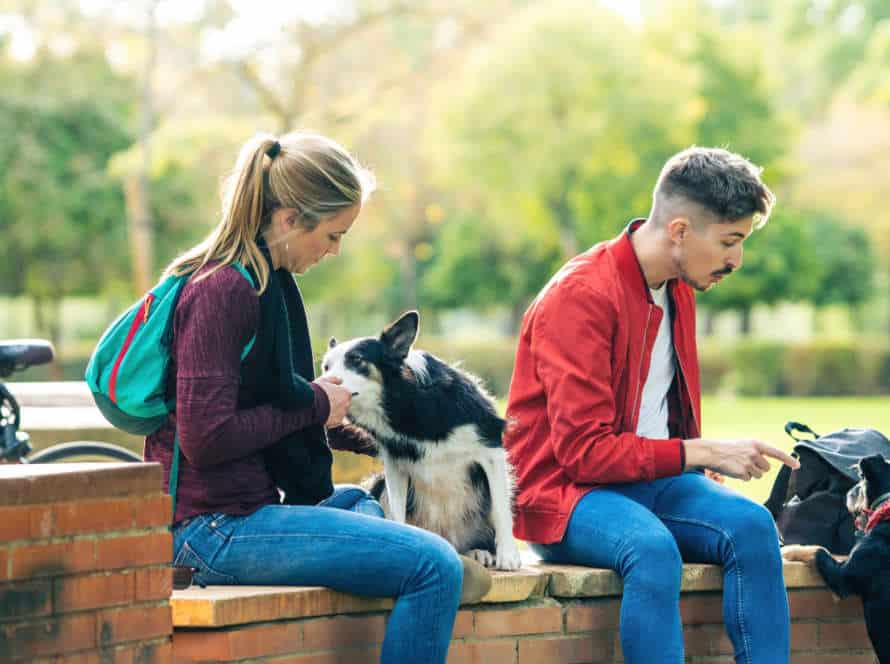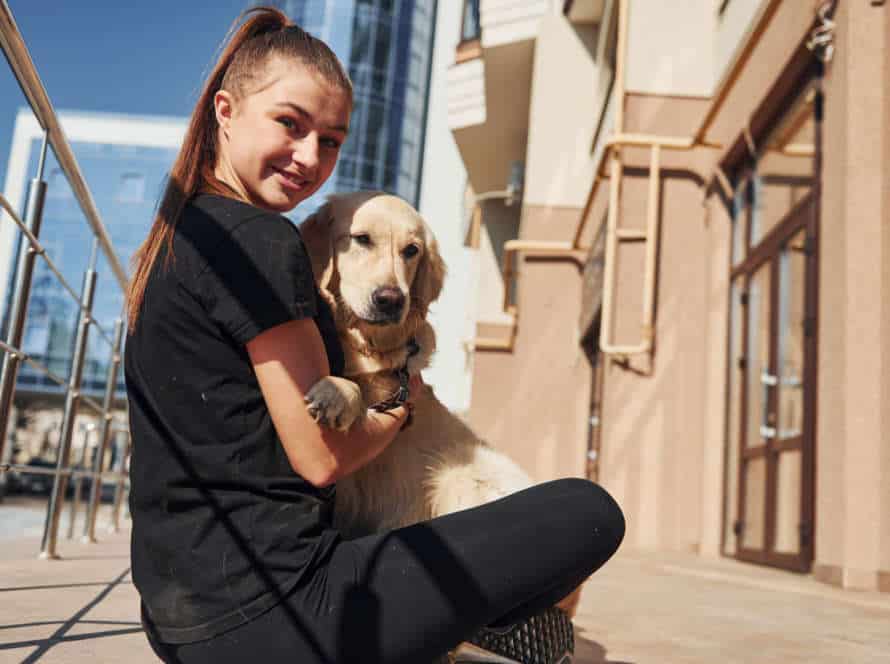Positive Reinforcement Techniques for Well-Behaved Adult Dogs
Positive reinforcement techniques are proven effective in encouraging good behavior in adult dogs. Here are some tips:
- Treats: Use small, bite-sized treats to reward good behavior – but don’t overdo it!
- Verbal Praise: Speak kindly and positively to show your affection and to encourage the good behavior again.
- Toys: Playtime is a great way to reward and stimulate your pup!
- Clicker Training: Clickers mark good behavior and dogs remember the sound for rewards.
Remember, be consistent and patient with positive reinforcements – your pup will reward you with good behavior!
Understanding Positive Reinforcement Techniques
Positive reinforcement is a form of training that rewards nice behavior with treats, words of encouragement, toys, or other treats. It’s one of the most common ways to train adult dogs, as it’s both successful and gentle. To understand how positive reinforcement works and to use the techniques, can help you form a good bond with your pup!
What is positive reinforcement?
Positive reinforcement is a psychological concept that rewards or praises behaviors. In dog training, this technique can teach new tricks and improve behavior. Here are a few common techniques:
- Treats: Give your pup a small treat when they act as desired. This reinforces their good behavior.
- Verbal praise: Praise them with phrases like “good girl/boy,” “well done,” or “yes.”
- Playtime: Attention and playtime are great rewards too.
It’s essential to combine clear communication and consistent training with positive reinforcement for the best results.
Benefits of using positive reinforcement over punishment
Positive reinforcement training is the way to go for adult dog owners who want a better behaved pup! These are the benefits:
- Building trust – Positive reinforcement strengthens the bond between you and your pup.
- Better results – Positive reinforcement gives better and longer-lasting results than punishment-based methods.
- Improving attitude – Positive reinforcement helps your dog be more open to training and learning new behaviors.
- No negative consequences – With positive reinforcement, there’s no risk of aggression or anxiety.
- A happy life – Positive reinforcement helps keep your pup happy and healthy, and reduces behavior issues in the future.
Pro Tip: Use positive reinforcement with clicker training. This will make your pup connect rewards with the sound of the clicker, allowing for easier training in the future.
Psychology behind positive reinforcement
Positive reinforcement is a psychological technique that has been proven to be effective in training adult dogs! This is based on the principles of operant conditioning. To reinforce desirable behavior, such as following commands or being kind to people or other dogs, rewards are given. Here are three techniques you can use:
- Treats – Reward your pup with something yummy for exhibiting desired behavior. Doing this will encourage them to repeat it for more treats!
- Praise – Use verbal praise and affectionate body language like petting or hugging to reward good behavior.
- Toys – Give your dog a toy to play with as a reward for exhibiting desirable behavior.
These positive reinforcement techniques are gentle and humane – plus, they work! No need for punishments or negative reinforcement.
Positive Reinforcement Techniques to Teach Basic Commands
Positive reinforcement is key when training adult dogs. To reinforce good behavior, treats or praise can be used! We’ll explore different techniques to teach basic commands, like “sit“, “stay“, and “come“. Positive reinforcement is the way to go!
Sit, Stay, and Lay Down commands
Train your pup the Sit, Stay, and Lay Down commands with positive reinforcement methods. This is a great way to help create good habits and strengthen your relationship with your canine buddy. Follow these tips to get started:
- Sit command: Hold a treat near your pup’s nose and raise it. This should make their hindquarters lower. Once that’s done, give them the treat and tell them how good they are!
- Stay command: Ask your pup to sit then raise your hand out with your palm facing them. Take one step back, then come back and give them the treat if they stayed put. Gradually increase the distance and duration of the stay command.
- Lay Down command: Ask your pup to sit then lower the treat slowly. This should make them follow and lay down. Once they do, give them the treat and praise them.
Remember: Consistency and patience are important when teaching commands. Use treats and praise to motivate good behavior and have a blast!
Come when called
Training your adult pup to come when you call them is an important part of obedience training. Positive reinforcement methods can make learning this command enjoyable & rewarding for your pup. Here are some techniques to help:
- Train in a quiet, distraction-free area.
- Use a high voice & cheerful tone when giving the command.
- Praise, treat, or play with your pup straight away when they come.
- Gradually increase the distance between you & your pup whilst practicing.
- Don’t punish or scold if they don’t obey, as this may put them off.
By using positive reinforcement methods consistently, your pup can learn & obey basic commands like ‘come when called’, making them a pleasure to be around!
Loose-leash walking
Loose-leash walking is a must-have command for walks that are enjoyable and stress-free. Positive reinforcement helps teach your pup to walk on a leash without pulling. Here are some tips for success:
- Start inside: Put the leash on your dog in a quiet spot. When your dog stands calmly, reward them with praise and treats.
- Mark good behavior: As soon as your pup walks without yanking, mark it with a clicker or a “Yes!” and reward them.
- Be consistent: Every time they stay close, reward them. Keep up the praise and treats to reinforce this behavior.
- Head outdoors: Once your pup has mastered indoors, transition to outdoor walks with more distractions.
- Use positive reinforcement: Use treats, praise and playtime to teach loose-leash walking and other commands.
It takes patience, consistency and positive reinforcement to get lasting results.
Positive Reinforcement Techniques for Addressing Problem Behaviors
Positive reinforcement techniques are great for curbing bad behaviors in adult dogs. Rather than punishing misbehavior, rewards are given for good behavior. This can be much more successful! Not only that, but these techniques can help to increase obedience and strengthen the relationship between owner and pet.
So, what sort of positive reinforcement techniques are there? Let’s take a look!
Jumping on people
Jumping on people is a common problem behavior in adult dogs. It can be addressed using positive reinforcement techniques. Here are four steps to train your dog to stop jumping:
- Teach them an alternative behavior (like “sit” or “down”) and reward them when meeting new people.
- Ignore the jumping, and give attention only when exhibiting the desired behavior.
- Use treats, toys or verbal praise as positive reinforcement when they do the right thing.
- Be patient and consistent. Don’t give up if they don’t respond straight away.
Using positive reinforcement will help address problem behaviors and strengthen the bond between you and your furry friend.
Chewing on inappropriate items
Chewing the wrong stuff is a typical hound issue. But, positive reinforcement can help. Here’re some strategies for adult doggies:
- Get plenty of right chew toys. Praise your pooch when they use them.
- Use positive reinforcement to move your pup’s attention to more appropriate items.
- Exercise and give mental stimulation to reduce boredom and stress.
- Keep an eye on your pup. Reduce access to things they like to chew.
- Reward good choices with praise, pets, and treats.
By using positive reinforcement, you can teach your pup appropriate chewing and reduce destructive habits.
Excessive barking
Excessive barking is a common problem for adult dogs. To address it, use positive reinforcement techniques. Such techniques can help your dog develop good habits.
Here are some of them:
- Redirect attention: Train your pup to look at you when you direct attention to a new activity. Give rewards when they stay calm.
- Use verbal cues: Teach them commands like ‘quiet’ or ‘enough.’ Reward them with treats or affection when they obey.
- Provide exercise and stimulation: Boredom and lack of exercise can make them bark too much. Give them lots of exercise and playtime.
- Reinforce good behavior: Praise your pup when they stay quiet.
Remember, consistency is key! With consistent rewards, you can make your pooch a better companion and address problem behaviors.
Clicker Training and Targeting Techniques
Clicker training is a popular way of training adult dogs. It uses positive reinforcement. A clicker and reward are used to help the pup learn.
Targeting is also a type of positive reinforcement. You teach the dog a new behavior by getting them to touch a target with their nose or paw.
Let’s look at these two techniques more closely.
What is clicker training?
Clicker training is a way to reward your pup for good behavior. It involves clicking a clicker and then giving them a treat. Get your dog used to the clicker by clicking it and then giving them a treat.
Mark their good behavior with the clicker. For instance, when teaching them to sit, click the clicker when they sit and give them a reward.
Use targeting too. e.g., put a target stick in front of them and click the clicker when they touch it with their nose.
Be consistent, patient and keep the sessions short and fun. Clicker training is a great way to build trust between you and your pet.
Pro tip: Choose a quiet place with few distractions to make training easier.
How to use a target stick for training
Target sticks are ideal for training pets with positive reinforcement techniques. They’re commonly used in clicker training to teach dogs new tricks. Here’s how to use one to train your pup:
- Get a target stick with a soft tip that’s comfortable to use.
- Let your dog smell it.
- When they sniff or touch it, click or say “good job” and give them a treat.
- Move the stick and encourage them to follow or touch it.
- Use the clicker and treats to reward them for doing well. Practice regularly to create a well-behaved adult dog.
Examples of clicker and targeting techniques for well-behaved adult dogs
Clicker training and targeting are positive reinforcement methods for dog training. Here’s how to use them:
Clicker Training:
- Say the command and guide your dog into the desired position.
- As soon as they do it, click the clicker and give them a treat.
- They’ll learn the connection between the click, the action, and the reward.
- As they progress, you can stop guiding and use the clicker alone.
Targeting:
- Teach them to touch an object with their nose. For instance, to teach ‘stay’, hold a stick in front of them.
- As they touch it, say ‘stay’ and reward them.
- Increase the distance gradually while using the stick.
- Eventually, they’ll respond to the command without the stick.
Consistent use and patience will help you reinforce good behavior and build a strong bond with your adult dog.
Reinforcement Strategies for Proper Socialization and Stress-Free Vet Visits
Socializing and having stress-free vet visits are a must for adult dogs to have pleasant lives. Positive reinforcement is the key to teaching them right behavior. This builds a bond and helps them build healthy coping skills. In this article, we’ll cover the best strategies for successful use of positive reinforcement. It’ll be helpful for both you and your pup friend.
Positive reinforcement for puppy socialization
Positive reinforcement is a great way to socialize your pup and make vet visits stress-free. Reward your furry friend for good behavior. Strengthen desirable behaviors and make learning fun! Here are some reinforcement strategies:
- Treats – Give small, bite-sized treats for sitting calmly or being petted by strangers.
- Praise – A verbal “good boy/girl” can be powerful reinforcement.
- Toys – Toys are good rewards, especially for young pups who like to play.
- Clicker Training – A clicker is a device that makes a distinct clicking sound to identify and reinforce good behavior.
A well socialized and trained dog is an asset. Positive reinforcement techniques provide a stress-free way to ensure your pup develops good habits.
Positive reinforcement for visiting the vet
Positive reinforcement can be a great way to help your pup feel more relaxed at the vet’s. Use treats, praise, and play to build a positive connection with the office. Here are some techniques to try:
- Bring a yummy treat for your pup as a reward for good behavior.
- Use a happy voice to praise them throughout the visit.
- Bring a toy to play with in the waiting room.
- Take them on trial runs to get used to the sights and smells.
- Practice handling exercises at home and reward with treats and praise.
Pro tip: Ask your vet for advice tailored to your pup’s health and personality.
Strategies for dealing with stress and anxiety in dogs when in unfamiliar situations.
Dogs can get anxious in strange situations. Fortunately, there are positive reinforcement strategies to help them stay calm and confident.
Socializing your pup is the best way to prevent anxiety. Introduce your dog to new people, places, and experiences gradually and reward good behavior with treats or playtime. This will help your pooch form positive connections with the unknown.
Before vet visits, train your pup to feel comfortable with activities such as handling, grooming, and medicine. Praise and reward them for good behavior at the vet. With consistent training and rewards, your dog can learn to handle unfamiliar situations easily.
Tip: Understand your pup’s body language and signs of stress, like panting, pacing, or hiding. If your pooch is anxious, take them away from the situation and provide a quiet, safe space for them to relax.
Frequently Asked Questions
1. What is positive reinforcement and how does it work in training dogs?
Positive reinforcement involves rewarding desired behaviors of a dog to increase the likelihood of that behavior occurring again in the future. Treats, toys, praise, and affection are examples of positive reinforcers that can be used in conjunction with a marker signal (such as a clicker) to communicate to the dog which behavior is being reinforced.
2. Can positive reinforcement be used to modify an adult dog’s behavior?
Yes, positive reinforcement can be used to modify an adult dog’s behavior. While it may take more time and patience compared to training a puppy, adult dogs are still capable of learning and being motivated by positive reinforcement techniques.
3. What are some effective positive reinforcement techniques for well-behaved adult dogs?
Effective techniques include using high-value treats, such as small pieces of cheese or hot dogs, to reward desired behavior, timing the reward immediately after the desired behavior occurs, and gradually adding verbal praise or affection as the dog becomes more consistent in the desired behavior.
4. Can positive reinforcement be used in conjunction with other training methods?
Yes, positive reinforcement can be used in conjunction with other training methods, such as clicker training, obedience training, and desensitization and counterconditioning. However, it is important to consult with a professional dog trainer to ensure that the methods are being used correctly and safely.
5. Are there any potential negative effects of using positive reinforcement?
No, there are no negative effects of using positive reinforcement when it is used correctly. However, if the timing of the reward is off or the reward is given for an undesired behavior, it may reinforce the undesired behavior instead of the desired behavior.
6. How long does it typically take to see results with positive reinforcement training?
The time it takes to see results with positive reinforcement training can vary depending on the individual dog and the behavior being taught. However, consistency, patience, and proper timing of rewards can help speed up the process.

